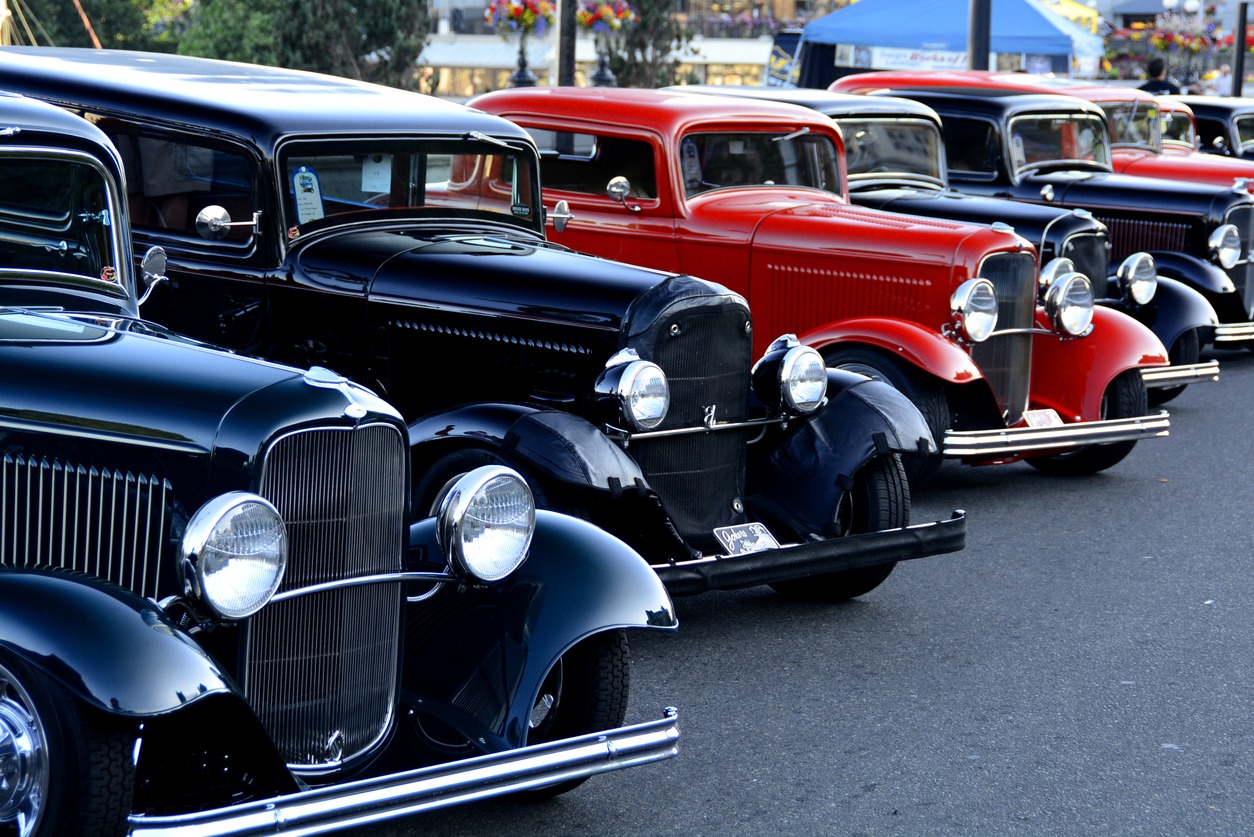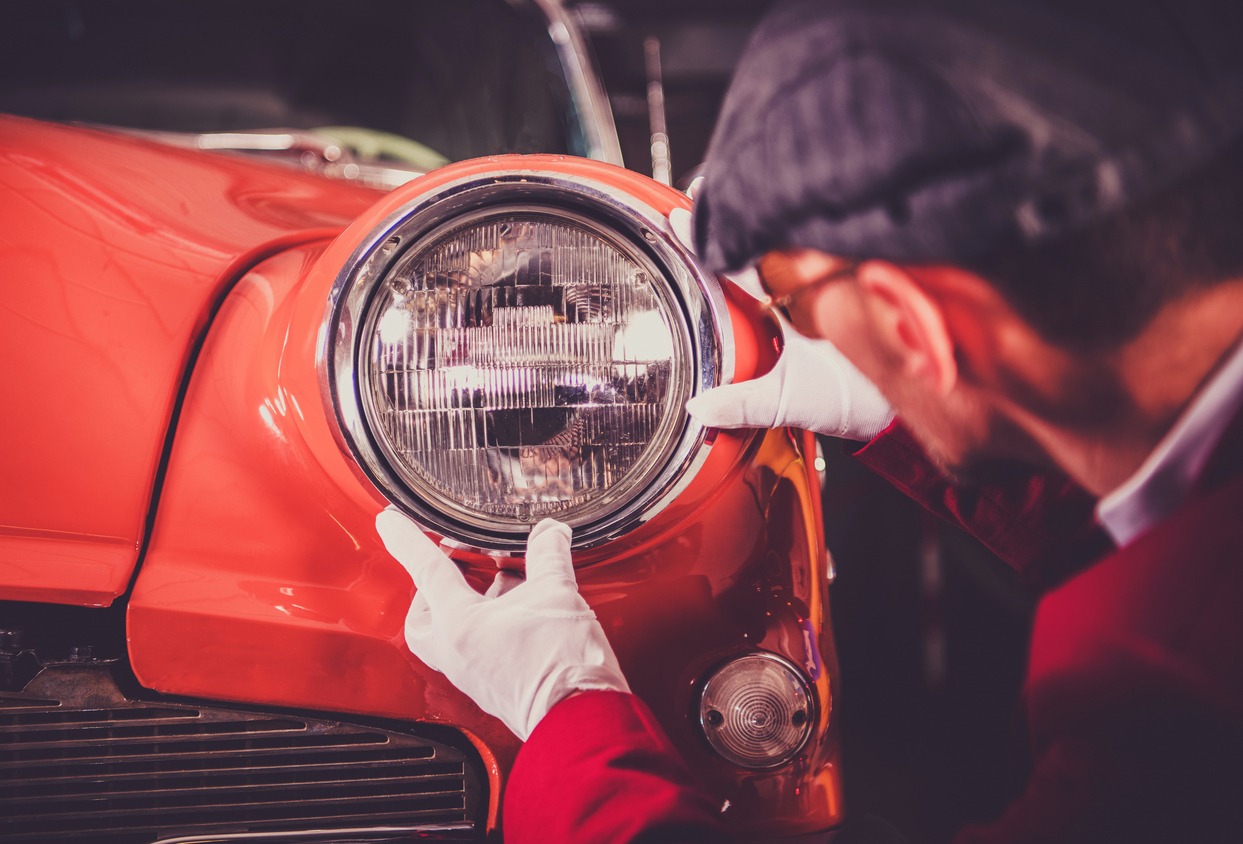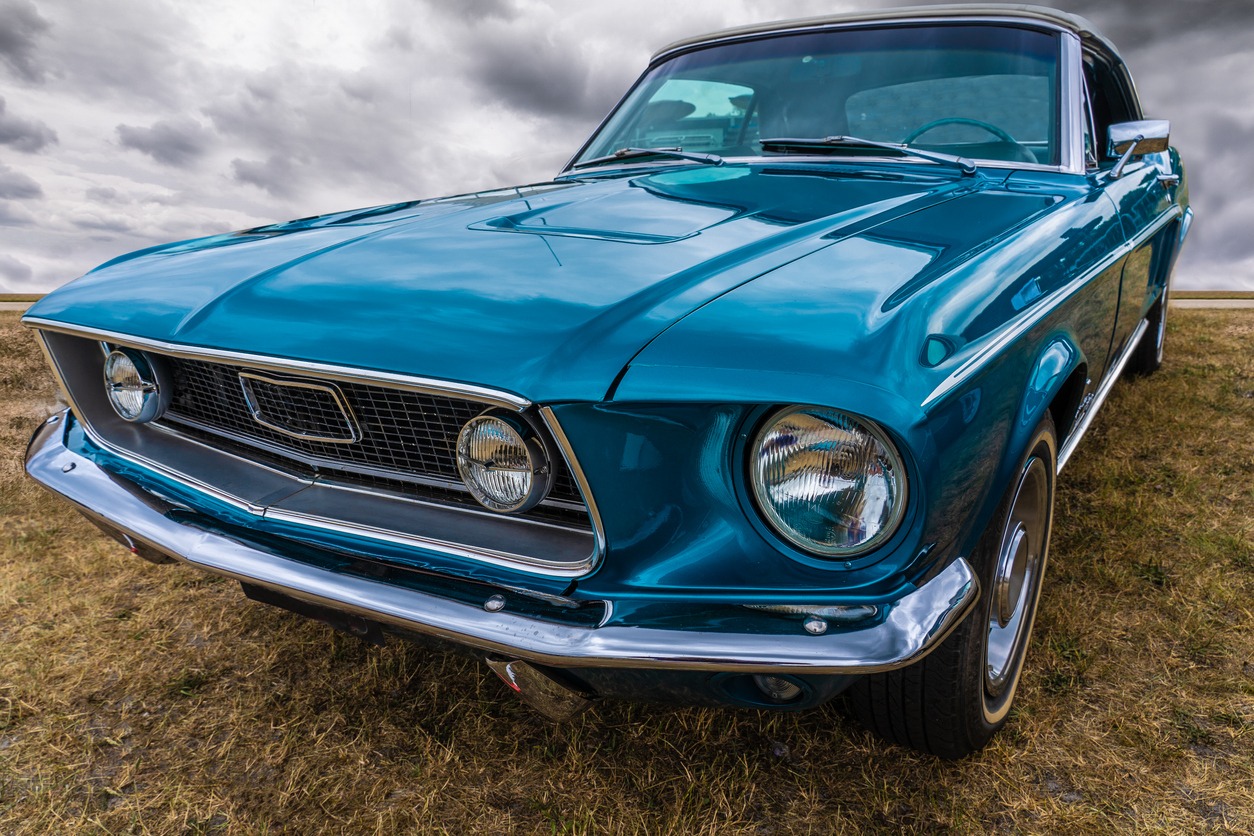For classic car enthusiasts, the thrill of attending car shows and events is unmatched. Whether it’s for a trophy, cash prize, or just the sheer joy of mingling with other vintage vehicles and showing off your cherished car, these gatherings are a blast. Now’s the perfect time to rev up your classic for the upcoming season, and our tips are here to make sure you have the best time!
How to Prepare for the Show
Polish your car to perfection
Just washing and waxing your car isn’t enough for a car show. You need to give it a thorough detailing, inside and out, to make it look its best. Start by waxing the body well, cleaning the tires deeply, and replacing any parts that are damaged or rusty.
Crucial: The wow factor at any car show is how amazing the cars look. This means you should put a lot of effort into cleaning and detailing your classic car before the event. And while you’re cleaning and waxing, remember to polish the chrome and clean the windows, too.
Don’t neglect the interior
You’d be surprised how many classic cars turn up at shows with stunning exteriors but disappointing interiors. Don’t let this be you! A clean interior can really impress the judges. Start cleaning from the top, like the roof liner, and work your way down to the floors. To get that showroom look, wipe down the dashboard, instrument panel, door panels, and seats.
You may also consider making some quick upgrades to the interior, like adding a new steering wheel cover or custom seat belts. These small changes can make a big difference.
Remember to bring a handheld vacuum to the show. Even if you’ve vacuumed thoroughly before, crumbs and dust always find a way in. Give your car’s interior a quick once-over at the show to ensure it’s spotless in every nook and cranny.
Pay attention to small details
Car shows often have an awards portion, so to clinch that trophy, pay attention to little details so no stone is left unturned. Judges have a keen eye for spotting even the smallest flaws that can make or break a winner. Make sure every part of your car, from the grill and wheels to the chrome trim, is polished to perfection. Check that your license plate is straight and clean, mirrors are smudge-free, and both headlights and taillights are crystal clear. Remember, it’s often these small touches that set you apart!
Plan your transportation
Depending on the distance and condition of your classic car, you can drive it to the show or use a transportation service. Enclosed transport is recommended for high-value or particularly delicate vehicles to protect them from the elements. If you choose to transport your car, secure loose items inside the car, and if using a trailer, ensure it’s properly fastened and covered.
If you drive the car, ensure it is mechanically sound for the journey. Check fluids, tire pressure, and brakes. Map out a route that is car-friendly, avoiding rough roads or areas with heavy traffic. Consider the best time to travel to avoid congestion.
Make sure your on-site arrival is smooth. Know the unloading area and procedures at the show. Arrive early to secure a good spot and have ample time for any last-minute preparations.
Bring different emergency kits
When going to a car show, you must be prepared for whatever comes your way. You may need on-site adjustment, so make sure you have these:
- Basic toolkit: This includes wrenches, screwdrivers, pliers, and any specific tools unique to your car’s make and model. These can be invaluable for quick mechanical adjustments.
- Detailing kit: Even though you hope you won’t need them, it’s smart to bring along your detailing supplies. Window cleaners, microfiber towels, and applicator pads are lifesavers for last-minute touch-ups or if someone accidentally leaves a smudge on your car. But if you plan to use your classic car for transport, a detailing kit is essential for on-site cleaning, as you may have acquired dirt and dust on the way. Plus, having something to do with your hands can be a great way to ease any nerves during your first show!
- Emergency supplies: Include a first-aid kit, fire extinguisher, jumper cables, and basic emergency items. It’s better to be prepared for any unexpected situations.
Know your car
As the owner of a classic car, it’s impressive if you understand and can articulate the history and nuances of your car, especially in a car show setting. Expect curious onlookers and judges to ask about various aspects of your vehicle, from its make and model to more intricate details about its restoration journey and unique features. Here’s how you can prepare:
- Study your car’s history: Learn about the make and model, the year it was manufactured, and its historical significance. This could include its role in automotive history or any groundbreaking features at the time of its production.
- Document the restoration process: If you’ve restored your car, be prepared to discuss what you’ve done. This could include the types of parts used (original vs. reproduction), any modifications, and the reasoning behind specific restoration decisions. Before-and-after photos can help visualize this transformation.
- Highlight unique features: Every classic car has something that makes it stand out. It could be a rare color, a limited-edition trim, or custom modifications that you’ve added. Be prepared to discuss these in detail.
- Share personal stories: Personal anecdotes about your car can be very engaging. This might include how you acquired it, challenges you faced during restoration or memorable experiences you’ve had with it.
- Stay enthusiastic: Your passion for your car can be infectious. Even if someone isn’t a classic car enthusiast, your enthusiasm can make the interaction memorable and enjoyable.
Have your documentation ready
Before driving to the car show, ensure you have enough and proper documentation. Provide a clear history of the car’s ownership. This can include previous owners, original purchase documents, or any notable stories linked to its history.
If the car was restored, detail the process with before-and-after photos, receipts, and work descriptions. This adds credibility and interest to your vehicle’s story.
If your car is authentic – meaning it still keeps its original parts – have the documents to back that up. Provide information on the car’s originality, such as matching numbers, original parts, and factory specifications. Authenticity is often highly valued in classic car shows.
If your car has previously won awards or received recognition, be sure to display this information as it adds prestige and interest.
Prepare display materials
Prepare informational posters or displays that can stand alongside your car. These should be engaging, easy to read, and visually appealing, offering viewers insight into your car’s unique history and features
Tips to Remember On the Day of the Classic Car Show
Arrive bright and early
Seasoned car showgoers know the secret: arriving early gets you a prime spot. And by early, we mean a few hours before the show starts, not just 20 minutes. Yes, this might mean getting up at the crack of dawn, but snagging that perfect parking space is totally worth it.
This is even more crucial if you’re bringing your car on a trailer. Those big gooseneck trailers can be up to 40 feet long and hold much weight. Arriving ahead of the crowd makes navigating to your spot easier and safer.
Display everything right
You’ve worked hard on your classic, so make sure you show it off properly. Let people peek inside by rolling down the windows. Open and close the hood now and then to show off the engine and the vehicle’s sleek design.
Bring along any trophies or accolades your car has won, and maybe set up a small table to display its history and achievements. A photo album of the restoration, the original bill of sale, or any other historical documents can add a lot of interest. Don’t forget to include a bit about yourself – your name and contact number should be visible so judges and potential buyers can reach you if you’re away from your vehicle. Even if you’re not planning to sell, you never know what offers might come your way.
Take photos
Of course, you need to have proof that you attended a car show with your own vintage beauty! Besides showing off – which, honestly, is a secret guilty pleasure for many – high-quality photos of your classic car at the show can serve multiple purposes:
- Creating a visual record: Photographs are a great way to document your car’s condition and appearance at a specific point in time. This can be particularly useful for insurance purposes or for tracking changes over time.
- Sharing with others: Sharing photos on social media, car enthusiast forums, or with family and friends can be a great way to connect with others who share your interest in classic cars. It can also be a way to inspire others who are thinking of entering the world of classic car restoration.
- For future sales: If you ever decide (or need) to sell your car in the future, having a portfolio of high-quality, professional-looking photographs can be handy. Great photos can significantly enhance its appeal to potential buyers, especially when there are photos from car shows where your car is presented at its best.
- Sharing the experience: Photos can also capture the atmosphere of the car show itself, including crowds admiring your car, any awards or recognitions received, and the overall experience of the event. These are great memories and attest to the car’s pedigree and standing in the classic car community.
To take good photos of your classic car, look for good lighting, ideally early morning or late afternoon. Capture various angles, including close-ups of unique features and wide shots showing the car in the context of the car show. Use a good-quality camera if possible, or ensure your smartphone camera settings are optimized for the best results.
Bring your own lunch
Car shows can last the whole day and really tire you out. You could stand in a long line for food, leave your car alone, or you can bring your own lunch, which is a lot easier. Pack some healthy snacks and drinks to keep your energy up. This way, you avoid the queues and get more time to enjoy the show.
Look, don’t touch
One of the golden rules at car shows is to respect others’ cars. Feel free to admire them as much as you like, but keep your hands to yourself unless the owner says it’s okay. Accidentally leaving a mark on a freshly detailed car is a big no-no and won’t go down well with fellow attendees.
Be kind
It’s also important to stay positive about other people’s cars at the show. Sure, you might not be a fan of every design, but it’s not cool to talk negatively about them in front of others. Even if a car isn’t to your taste, try to find something nice to say. Remember, others will likely extend the same kindness to you and your vehicle.
Avoid showing off with stunts
There comes a moment at car shows when engines start roaring, and the atmosphere gets loud and thrilling. However, joining in on spontaneous revving contests isn’t really looked upon favorably. Try not to be the one with the loudest car, and definitely avoid any risky stunts that could bother or harm others. It’s best to play it safe throughout the event.
Check out other car styles
We all have our favorite car brands or styles, but car shows are a great chance to expand your automotive horizons. Take the opportunity to look at different types of vehicles, even those you might usually overlook. You might discover a hidden treasure or grow to appreciate a new style.
Network with other enthusiasts
As you explore, use the chance to connect with fellow car lovers. You may have different tastes, but your shared passion for cars can lead to instant connections. Car shows aren’t just about the vehicles; they’re also perfect for making new friends in the car community.
Engage and share your story
A big part of the car show experience is mingling with others. Be ready to chat with attendees, answer their queries about your classic, and share its backstory. If you’ve worked on restoring it, bring along some photos to show its transformation. Your enthusiasm and openness in conversation will make a memorable impact and enrich the experience for everyone.
Clean up after yourself
Once the show wraps up, make sure to pack up everything you brought and leave your spot as you found it. Dispose of any trash and do a final check of your area. Following the leave-no-trace principle is a vital part of car show etiquette. Littering is definitely not the way to earn respect in the car enthusiast community.
Takeaway
Attending your first car meet is a moment you’ll remember vividly as a car enthusiast. It can be an incredible experience for all the right reasons. By keeping these tips in mind, you can steer clear of any hiccups, give your vehicle the attention it deserves, and even make some new friends along the way. Most importantly, relish the admiration your car garners and savor the sense of pride and community that comes with being a part of this special group of car enthusiasts.




